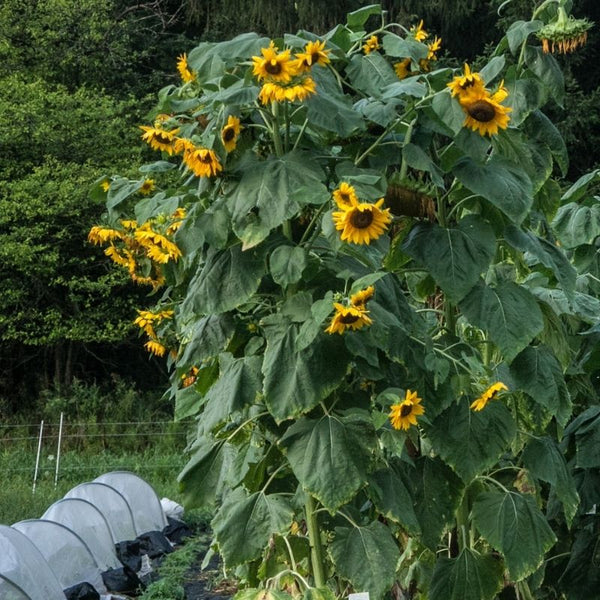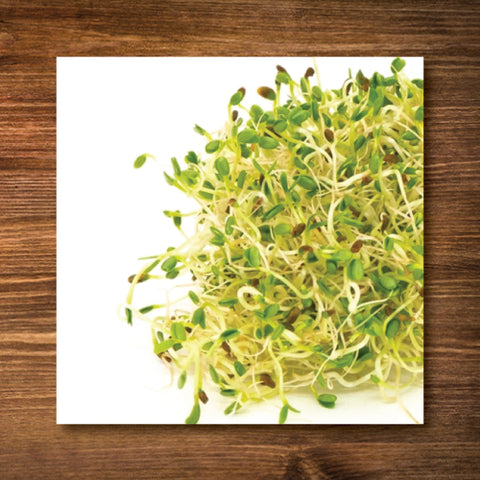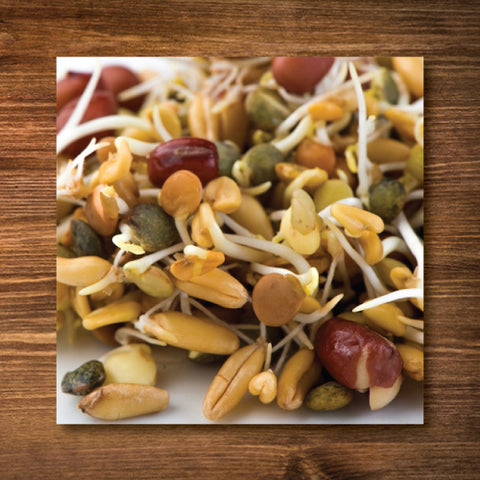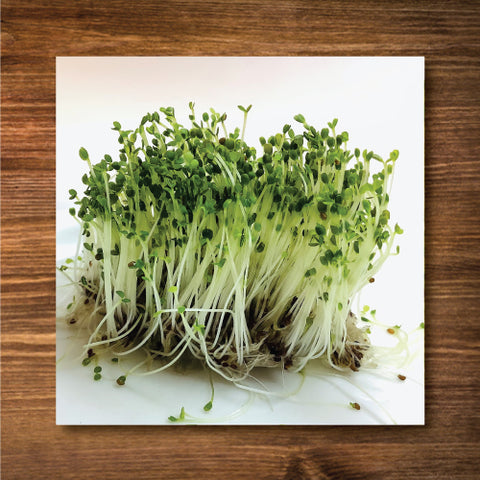Seeds - Sunflower, They Might Be Giants OG (F)
$4.99
This item may be out of season or currently out of stock. Please check back.
Description: Imagine all the massive sunflowers, bright and swaying in the breeze, towering over our heads! The growers at Fruition sowed an impressive collection of giant sunflower varieties and, instead of choosing one to share, they let them all cross to bring even more glorious diversity to you! The name ‘They Might Be Giants’ is both an homage to a band the Fruition team is fond of (!), as well as perhaps an understatement: Friends, these sunflowers, will most assuredly dwarf everything around them, lol!
Like all sunflowers, more nutrients will inspire more height, so if you’re visioning 15+ foot tall sunflowers, sow them with a shovel of extra compost and stand back.
A cross between many different giant sunflowers, They Might Be Giants is a beautiful bridge moving beyond the ‘fixed-traits’ of ‘variety’ expectations in our time, part of Fruition’s See(d)ing the Change project, as are are YOU! Together, we are sowing the world we dream of, where deliciousness and diversity are embraced, amplifying the beauty and abundance that is resistance as well as resilience. Learn more here!
Pack Size: 20 seeds
Latin Name: Helianthus annuus
Main Uses: Culinary, Ornamental
Zone Hardiness: Annual
Exposure: Full sun
Height: 5' - 6'
Flower Color: Yellow-orange - heads often 40 cm (16") across!
Certified Organic: USDA Certified Organic
Germination: 7 - 14 days at 21°C.
Indoors: Sow sunflowers indoors 2 - 4 weeks before the average last frost date to get a head start on flowering. Sow 2-3 seeds direct to a minimum 7.5 cm (3") pot and use containers that are biodegradable and can be planted into the soil outdoors. Thin to strongest seedling when plants are 15 cm (6") tall.
We recommend applying a kelp supplement such as Sea Magic starting at the time of sowing, then weekly through the growing season. A transplant fertilizer such as Evolve Seedling starter can be alternated with the kelp on a bi-weekly basis once the second set of true leaves has emerged.
Outdoors: It is easy to start sunflowers direct to the garden or large pots outdoors, but this does delay flowering by a few weeks compared to those started inside. However, direct-seeded sunflowers generally grow taller than those transplanted from pots (due to damage to roots when growing in starter containers).
If direct seeding outdoors, wait until the soil has warmed in the first week of June. Sow in rows, planting small clusters of 5 seeds approximately every 15 cm (6"). As the seedlings grow up, gradually thin them down to one strong plant spaced every 30 - 50 cm (12 - 20"); do a first thinning when plants are about 30 cm (12") tall, then a second when they get to 60 cm (24") tall.
Planting depth: 2.25 cm (1") deep. Cover lightly with soil.
Growing in Containers: Sunflowers can be grown in extra-large planters but will be stunted in smaller ones. If growing in containers, feed sunflowers weekly with a higher nitrogen organic fertilizer such as Evolve Fish Grow, as they are heavy feeders.
Growing in Mixed Planters: Not suited for mixed planters, except for large landscape pots or raised beds. Be mindful that sunflowers are very domineering plants and develop large roots that will soak water and nutrients away from other plants in mixed containers.
Fertilizing (Garden): Sunflowers thrive on rich soil, so be sure to amend garden beds amply with quality compost ahead of planting. We recommend Sea Soil. If large plants and seed heads are desired, feed sunflower weekly with a liquid organic fertilizer such as Evolve Fish Grow.
Watering (Garden): Water regularly to establish. Once mature, water deeply, soaking the roots at least once per week (although excessive moisture can cause stem root, so champion sunflower growers will dig a little ring moat about 30 - 60 cm (12 - 24") out from the stem, and water there.
Beneficials Attracted to this Plant: Birds will love feeding on the seed heads in fall (and winter, if left standing).
Harvesting: Heads can be harvested as soon as the back of the flowers starts to turn from green to yellow. Cut plants to 1 foot, place heads on screened drying racks, in paper bags, or another clean location to capture mature seed. Choose a well-ventilated location out of direct sunlight for drying. When seeds are ripe they simply fall from the heads.
Suitability for Indoors: Not suited for indoors.




